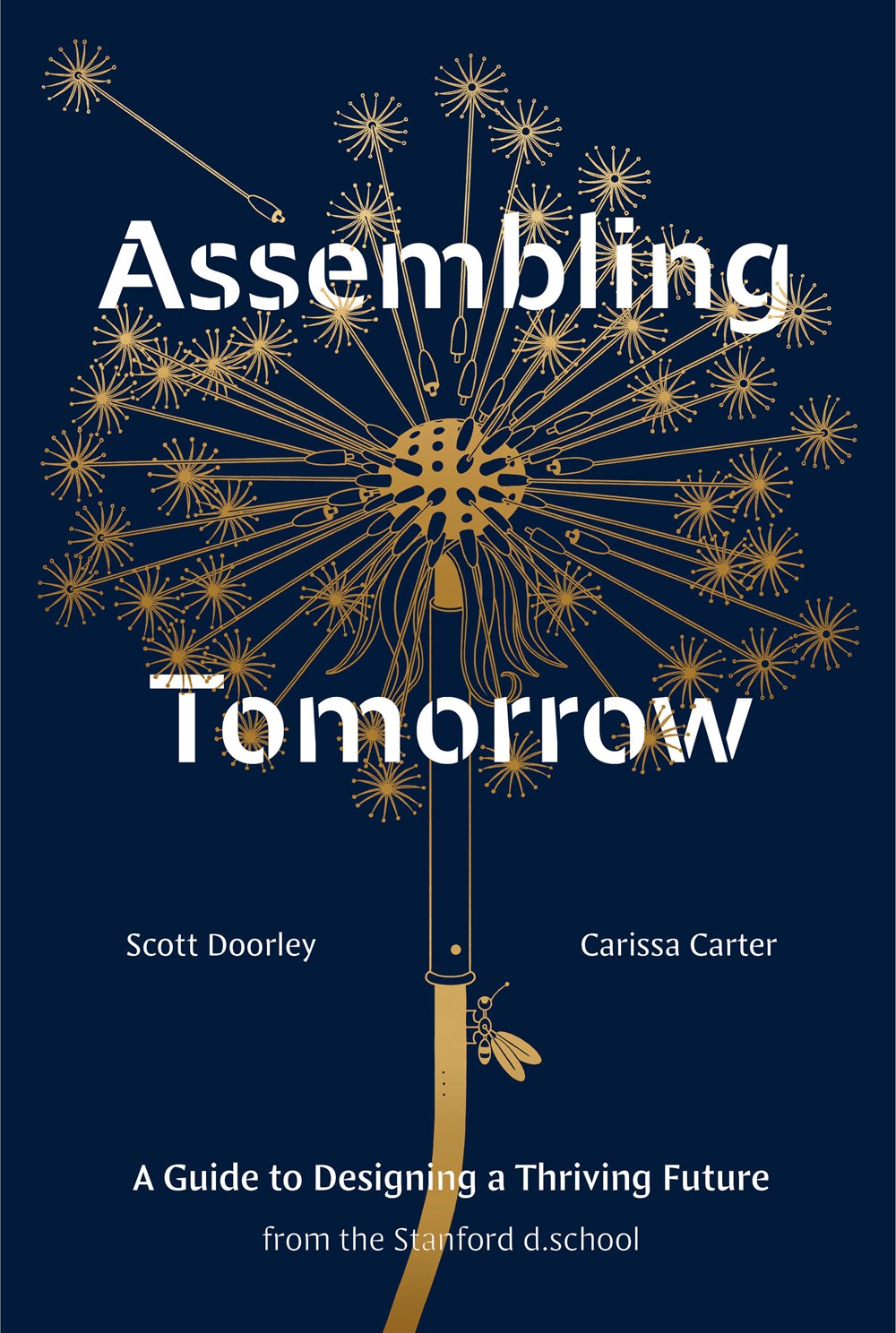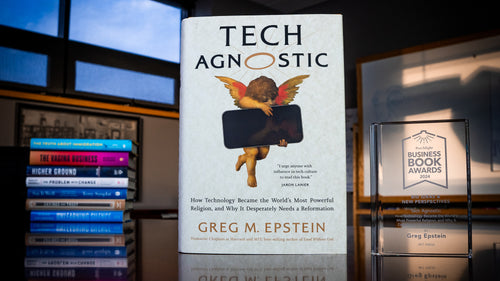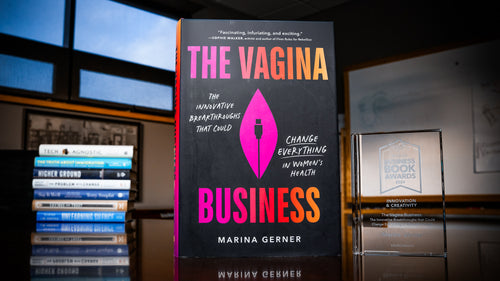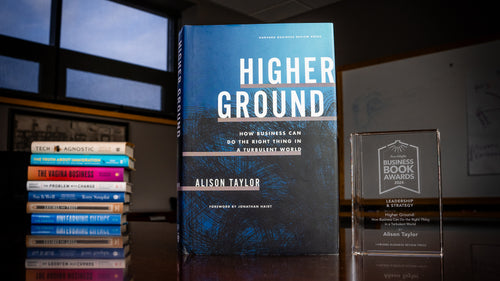An Excerpt from Assembling Tomorrow
 In Assembling Tomorrow, authors Scott Doorley and Carissa Carter explore the intangible forces that prevent us from anticipating just how fantastically technology can get out of control, and what might be in store for us if we don’t start using new tools and tactics. Despite our best intentions, our most transformative innovations tend to have consequences we can’t always predict. From the effects of social media to the uncertainty of AI and the consequences of climate change, the outcomes of our creations ripple across our lives. Time and again, our seemingly ceaseless capacity to create rubs up against our limited capacity to understand our impact.
In Assembling Tomorrow, authors Scott Doorley and Carissa Carter explore the intangible forces that prevent us from anticipating just how fantastically technology can get out of control, and what might be in store for us if we don’t start using new tools and tactics. Despite our best intentions, our most transformative innovations tend to have consequences we can’t always predict. From the effects of social media to the uncertainty of AI and the consequences of climate change, the outcomes of our creations ripple across our lives. Time and again, our seemingly ceaseless capacity to create rubs up against our limited capacity to understand our impact.
Assembling Tomorrow explores how to use readily accessible tools to both mend the mistakes of our past and shape our future for the better. We live in an era of “runaway design,” where innovations tangle with our lives in unpredictable ways. This book explores the off-kilter feelings of today and follows up with actionables to alter your perspective and help you find opportunities in these turbulent times.
Mixed throughout are histories of the future, short pieces of speculative fiction that imagine the future as if it has already happened and consider the past with a critical yet hopeful eye so that all of us—as designers of our own futures—can create a better world for generations to come.
The following excerpt is from Chapter 6: Shapeshift.
◊◊◊◊◊
How to Shapeshift: A New Approach for Working in a Rapidly Changing World
Intentional or not, the modern era has been, in many ways, a quest for sameness: globalized markets, monoculture crops, standardized protocols. We need some sameness: it puts food on the table, helps people coordinate, and helps ideas spread. It’s efficient.
But sameness spreads trouble too, at an alarming pace. In the last three hundred years, biodiversity has plummeted. We’re in the middle of the sixth mass extinction of species in the last five hundred million years. Cultural diversity has nosedived alongside. A language goes extinct every few weeks. And ideadiversity—a new word I just made up to capture flexibility of thought—may be at an all-time low as present-day politics and policies cement us into binary choices and media becomes a copy-paste perpetuation of borrowed memes and knee-jerk reactions. To think differently, we need to cultivate different ways to think.
We call the nimble switching across ways of thinking and doing shapeshifting. To shapeshift requires pushing the fringes of our disciplines and experience and exploring where they overlap with others. This breeds possibility, and we need as much possibility as we can get.
Shapeshift with New Connections
To find ways to thrive, we need to become nimble at working with, not against, differences. Connecting diverse things—be it people, systems, or ideas—can feel like a tall order, but it is not unprecedented. The natural world nimbly connects distinct elements in unexpected ways, such that one thing’s waste is another’s dinner. But these connections are indirect—we may or may not be used to seeing them. Step one is to let go of old narratives and find inspiration in everyday intersections, overlaps, and patterns.
Examine the connections around you. Look at the interfaces, the borders between materials in the natural world. How does the tree cling to the rock? How does the lizard walk up the wall? How does the ocean meet the land? Look too at the interfaces in the human-made world. How do the tires interact with the pavement? How does the payment transfer between accounts, the pen mark the paper? Looking for connections will spark new ideas, new possibilities.
Shapeshift Your Imagination
Comparisons show up all through our thoughts. In their book Metaphors We Live By, a duo of cognitive science philosophers, George Lakoff and Mark Johnson, laid out how analogies shape the way we imagine and interpret. One example they use is how we apply the metaphors of up and down to diverse situations:
Happy is up; sad is down: That boosted my spirits. Thinking about her always gives me a lift. I’m feeling down. He’s really low these days.
Conscious is up; unconscious is down: Get up. I’m up already. He rises early in the morning. He fell asleep. He’s under hypnosis. He sank into a coma.
Rational is up; emotional is down: The discussion fell to the emotional level, but I raised it back up to the rational plane. We put feelings aside and had a high-level discussion. He couldn’t rise above his emotions.
Metaphors mold our thinking even when we’re not thinking about them. Our streams of thought are so intertwined that we hardly notice how much we think by association. You may not think about the direction “up” when you talk about being in “high spirits,” but it’s there.
As thinking tools, analogies illuminate understanding and depth by comparison. To Lakoff and Johnson, metaphorical thinking is our uncanny ability to “understand or experience one thing in terms of another.” Overlapping ideas alter how you imagine because they do three things: highlight, downplay, and hide. So if you can learn to try on metaphors like you try on outfits, they can distort your ideas in novel ways to picture things anew. Think of a metaphor like a garment. When envisioning how your next idea should work, try on a few different metaphors.
Mimic to Shift
People love to mimic. It’s how we learn and how culture evolves. We borrow ideas, throw them into a new context, and watch them evolve. We do it without thinking. It’s in our soul. You can also do it deliberately. Analogous research (also called analogous inspiration) is the act of observing one situation to learn about another. It’s a mimic octopus making itself look like a sea snake to protect its territory. It’s you trying on a different reality to reexamine your own.
The most famous versions of analogous inspiration tend to come from high-end product design. Legend has it that the Apple Genius Bar was inspired by Apple designers chatting up concierges at fine hotels. Restaurant manager Laura Cunningham famously had waitstaff at Per Se—a fancy New York restaurant—learn ballet to help “choreograph their service” in the dining room.
But there’s no reason you can’t apply this tactic to anything you’re working on. We’ve seen people use it to rethink access to health care and reconsider spaces for learning. We’ve learned from soccer teams who develop subtle ways to collaborate, with small tweaks to the way they serve water during breaks (when players grab prefilled water bottles, they tend to mingle more than when they fill cups from a single cooler and need to get out of each other’s way). We’ve had students visit the circus to see how high-stakes mentorship might work in classes. The trick is to find one aspect of your current situation that needs some attention and think of another circumstance that could give you a different way to think about just that bit. Then go check it out.
Analogous inspiration does everything a good metaphor is supposed to—namely, changing how you see the world by highlighting some things and downplaying others. Bob Sutton, Stanford organizational behavior expert, told us that analogous inspiration is one of the best ways he’s seen to help people unlock new opportunities. It’s also just downright fun—even in serious situations. There’s something special about the way a new context helps you to reconsider old habits. It always leaves you with a little sparkle.
Sometimes it’s easier to fit in, to slide by unnoticed. Sameness has benefits. It can be more inclusive to have students wear uniforms (everyone is on a level playing field) and allow them to focus on learning rather than fashion. Standards help too. It’s efficient and convenient that within countries and regions the shape of power outlets is the same, and then glaringly annoying when you bring an electronic device overseas and need to find an adapter. But in the era of runaway design, we also need difference to adapt to unpredictable change. We also need biodiversity, cultural diversity, and ideadiversity to stay resilient. We need to shapeshift.
Reprinted with permission from Assembling Tomorrow by Scott Doorley, Carissa Carter and Stanford d.school, published by Ten Speed Press, an imprint of the Crown Publishing Group, a division of Penguin Random House LLC, New York.




